Conference Presentations by Elli Karkazi

Transdisciplinary Multispectral Modeling and Cooperation for the Preservation of Cultural Heritage. TMM_CH 2023. Communications in Computer and Information Science, 2023
Petralona Cave is one of the most impressive caves in Greece (also, at European level), mostly du... more Petralona Cave is one of the most impressive caves in Greece (also, at European level), mostly due to the discovery of the Petralona human skull, which is dated back to the Middle Pleistocene, as well as its rich collection of fossilized animal bones and the great number of lower Palaeolithic lithic artefacts. In this work, we focus on the digitization process for the Petralona Cave. This is part of the overall research work that is being realized in the framework of the Cave3 project which is co-financed by the European Regional Development Fund of the European Union and Greek national funds through the Operational Program Competitiveness, Entrepreneurship and Innovation, under the Special Action "Open Innovation in Culture".

European Association of Archaeologists. Widening Orizons, Kiel 8-11 Sept. 2021. Session #370 The Tangible and the Intangible: New Vistas on Cultural Heritage Documentation and Management, 2021
The unexpected covid-19 pandemic crisis called Greek museums to action digitally, as a response t... more The unexpected covid-19 pandemic crisis called Greek museums to action digitally, as a response to their mandatory closure. Inevitably, rapid adaptations and relative adjustments were imperative. In this climate of dramatic change, Greek museums had the ideal opportunity to enter the Digitocene Era. Our research is addressing the question of how Greek museums used their digital tools to engage with their visitors, further shedding light on the ways they met the challenge of Covid-19 lockdown. In order to answer the research questions we referred to the Hellenic National Cultural Portal ‘Odysseus’, which has been developed by the Greek Ministry of Culture. Data has been retrieved from the ‘museums unit’ of the portal, including 272 Greek museums. We focused on the first covid-19 lockdown period in Greece, namely from March the 20th until May the 4th 2020. On the basis of data retrieved, it has been evaluated whether the pre-existing digital ground was adequately solid and fertile to build up an integrated digital experience, furthermore whether digital content could function independently and self-sufficiently as a substitute for physical visits.

UISPP XVIIIe Congrès Paris - XVIIIe UISPP CONGRESS Paris 4-9 June 2018, 2018
Rodafnidia in its volcanic setting near a large palaeo-lake, is a Middle Pleistocene open-air sit... more Rodafnidia in its volcanic setting near a large palaeo-lake, is a Middle Pleistocene open-air site on the island of Lesbos, yielding compelling evidence for Acheulean groups in the Aegean. Their toolkit comprised a variety of tools, amongst which number Large Cutting Tools (LCTs) with strong affinities with the Large Flake Acheulean. The industry was knapped on three types of chert, which is the main rock used, an andesitic tuff (ignimbrite), and volcanic rocks, such as basalt. The Acheulean finds derive from fluvio-lacustrine deposits at a locale with abundant freshwater and lithic resources, near the shore of the present-day Kalloni Gulf. By virtue of its content and position at the junction between Anatolia, the Aegean Archipelago and the Balkan Peninsula, Rodafnidia links the Lower Palaeolithic archaeology of southeast Europe with that of west Asia and Africa. This paper presents the strategies of lithic raw material procurement and use at Rodafnidia. It brings together a coherent methodology for the study of Acheulean lithic raw material economy and consumption, founded on interdisciplinary research. The evidence from Lesbos is discussed in a comparative manner. Mots-Cl´es: raw material, Acheulean, Lower Palaeolithic, Large Cutting Tools, Aegean, Bifaces.
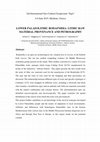
2nd International Geo-Cultural Symposium "Sigri"4-6 June 2015, Mytilene, 2015
Rodafnidia is an open-air archaeological site, situated next to Lisvori, in the Kalloni Gulf, Les... more Rodafnidia is an open-air archaeological site, situated next to Lisvori, in the Kalloni Gulf, Lesvos. The site has yielded compelling evidence for Middle Pleistocene Acheulian groups present on the island. Their toolkits consisted of a variety of Lower Palaeolithic tools, amongst which Large Cutting Tools (LCTs) manufactured by means of the distinctive 'African Pattern'. This paper presents the first results from the study of lithic raw materials used for the manufacture of the Rodafnidia LCTs. The type and the form of rock used for the knapping and their provenance are discussed. The relationship between different types of rocks and specific typologies is evaluated. LCTs were knapped on different rocks, including a brownish and black chert (mainly a fossiliferous type) and an andesitic tuff, both raw materials associated with the island's sedimentary and volcanic history. The aforementioned types are identified macroscopically and microscopically. The paper examines the spatial distribution of the sources from which the rocks were provenanced. This project further contributes to our knowledge of the survival strategies developed by Lower Palaeolithic people and the modes of adaptation to local environments. Affinities and differences with homologous Palaeolithic sites in the Eastern Mediterranean offer critical clues to the Middle Pleistocene hominin dispersals out of Africa and through Near East to Europe, as this region stands on the potential corridor.

The 'African pattern' is characterized by the following features: The presence of specific tool t... more The 'African pattern' is characterized by the following features: The presence of specific tool types (i.e. handaxes and cleavers), the raw material preferred for the manufacture of them, the high frequency of large flakes as blanks for the manufacture of bifaces, the use of side struck or end struck flakes, attempts to thin the bifaces in the area of the bulb of percussion, the trimming of the butt, minimum of trimming scars, the minimal investment in bifacial retouch, and finally the relative frequencies of these tools in an assemblage. A total sample comprising 313 handaxes, and 204 cleavers from Pniel 6 (87 handaxes made of andesite, and 18 handaxes made of hornfels and 118 cleavers made on andesite) and Cave of Hearths, South Africa, (63 handaxes and 88 cleavers made of quartzite) and Tabun Cave, Israel (160 handaxes made of flint), were subjected to detailed technological study. All of the archaeological sites are well established Acheulean regions and are characterized by different raw material used.

ICOM Germany Annual Conference - ICOM Cyprus and ICOM Greece. Museums Facing a Planetary Emergency, Online Conference 14 November 2020, 2020
Lockdown during COVID-19 period was a unique situation for a wide part of western contemporary so... more Lockdown during COVID-19 period was a unique situation for a wide part of western contemporary society. During this period the social modus operandi was forced to change dramatically. This new "way of living" also made many people to switch from a physical reality to a digital one. How should museums and cultural organizations react to this massive change? During the past few years, an ever-increasing number of Greek museums have responded to the digital imperative by creating their own websites. Nevertheless, museums' websites, regardless of their diversity, are rather designed to motivate physical visits to museums. The incomplete and fragmented online museum experience encourages and supports physical visiting, which is crucial to museums' existence and sustainability. The impact of the unprecedented and unpredictable lockdown due to the COVID-19 pandemic on Greek museums would seem to be a prime opportunity to demonstrate the value of their websites and digital activities in fulfilling the emerging needs and requirements. The present paper will provide an insight into the ways that Greek museums rose to the challenge of COVID-19 lockdown. Moreover, it will be examined whether the above online activities managed to act as substitutes to physical unmediated visit and to provide a genuine online visitor experience. In achieving the above research questions 274 Greek museums included in the Hellenic national cultural portal "Odysseus" will serve as the focus of the present study.
Talks-Presentations by Elli Karkazi
Αναστασία Χουρμουζιάδη, Έλλη Καρκαζή, Αλέξης Τούρτας, Φώτης Υφαντίδης, Ελένη Γαλάνη, Κωνσταντίνα Νικολοπούλου, Μυτιλήνη, τη 26η Σεπτεμβρίου 1922. Μια απόπειρα εκθεσιακής διαχείρισης της μνήμης. «Προσφυγική εγκατάσταση, μνήμη και δημόσια ιστορία» Τεχνολογικό Πολιτιστικό Πάρκο Λαυρίου, 20-22/10/2023, 2023

In and out of context: Weaving the itineraries of objects in museums, collections and storerooms, EAA 2023, Belfast, 2023
Material relics of the past are typically considered the backbone of exhibitions about the past. ... more Material relics of the past are typically considered the backbone of exhibitions about the past. Regardless of any academic discussion regarding their polysemy, fragmentary nature, or numerous interpretations, the aura of authentic objects and their "undeniable" physical testimony continue to be the focal point of visitors' experiences. Having all that in mind, when we designed an exhibition about the Asia Minor Catastrophe, one of our primary objectives was to discover an alternate method for incorporating material objects into an integrated exhibition narrative.
Instead of designing an exhibition around objects and assigning all other media a supporting, interpretative, or explanatory role, we treated material objects as elements of a non-hierarchical narrative toolkit; although the exhibition’s narrative included a small collection of heirlooms, they had the same narrative significance as that of sound, video, still image, text, and spatial installations.
Even though the first thing that visitors see is an authentic diary kept by a refugee from Asia Minor, the exhibition's plot plays with the materiality and affective power of this iconic object. Similarly, all other objects, carrying rich and diverse biographies, are introduced into a kaleidoscopic scenography, where, with the use of light and sound, they oscillate between being isolated museum entities and ambiguous personal reified memories.
Monitoring visitors’ behaviour we tried to understand whether we succeeded in both exploiting material objects' power and fighting their fetishist domination.
The exhibition was designed and implemented by the Laboratory of Museology of the University of the Aegean, being part of a wider project co-financed by Greece and the EU programme, Digital Transformation of the North Aegean in Culture and Tourism" [e- Aegean CulTour].
Papers by Elli Karkazi
Communications in computer and information science, Dec 31, 2022
Petralona Cave is one of the most impressive caves in Greece (also, at European level), mostly du... more Petralona Cave is one of the most impressive caves in Greece (also, at European level), mostly due to the discovery of the Petralona human skull, which is dated back to the Middle Pleistocene, as well as its rich collection of fossilized animal bones and the great number of lower Palaeolithic lithic artefacts. In this work, we focus on the digitization process for the Petralona Cave. This is part of the overall research work that is being realized in the framework of the Cave3 project which is co-financed by the European Regional Development Fund of the European Union and Greek national funds through the Operational Program Competitiveness, Entrepreneurship and Innovation, under the Special Action "Open Innovation in Culture".

Journal of Archaeological Science: Reports, 2024
The Kalamakia cave located on the western Mani Peninsula, southern Greece is a Middle Palaeolithi... more The Kalamakia cave located on the western Mani Peninsula, southern Greece is a Middle Palaeolithic site dated between ∼100,000 and >39,000 years BP. The aim of this paper is to provide insights into the Neanderthal groups’ mobility by addressing the lithic raw material procurement and management, with reference to the Kalamakia cave assemblage. The methodology included field survey and laboratory analyses, encompassing macroscopic, petrographic, and geochemical ones, for the location and identification of the sources of used lithic raw materials. Local, semi-local and allochthonous lithic raw materials were used by the Neanderthals at the Kalamakia cave to manufacture tools. The presence of various lithic raw materials used at the cave suggests diverse mobility strategies. The semi-local black/grey chert, followed by the allochthonous andesite was mostly used. Andesite transported across an east–west axis presents a long-term stability, both in terms of percentages and the different artefact types transported in both Unit III and IV of the cave. The significant quantities of andesite in the cave’s assemblage suggest non-random mobility, possibly linked to the exploitation of different ecological environments available in the region. The north-western part of the peninsula saw additional exploitation by groups moving along the coastal north–south corridor. However, cherts transported along this axis occurred occasionally, and their quantities were notably smaller in comparison to andesite. The strategic location of the cave close to the intersection of two natural movement routes may have played a key role in the circulation of Palaeolithic inhabitants, facilitating movements along east–west and north–south axes.

Η παρούσα διατριβή έχει ως αντικείμενο μελέτης τη μελέτη των τεχνικών επιλογών των παλαιολιθικών ... more Η παρούσα διατριβή έχει ως αντικείμενο μελέτης τη μελέτη των τεχνικών επιλογών των παλαιολιθικών λιθοξόων, μέσα από το πρίσμα της λίθινης πρώτης ύλης που χρησιμοποιήθηκε για τη λάξευση εργαλείων. Το ερευνητικό ζητούμενο προσεγγίστηκε διαχρονικά εξετάζοντας λιθοτεχνίες από αρχαιολογικές θέσεις της Κατώτερης, Μέσης και Ανώτερης Παλαιολιθικής Εποχής. Τo αρχαιολογικό δείγμα προέρχεται από την αρχαιολογική θέση της Κατώτερης Παλαιολιθικής Περιόδου Ροδαφνίδια, Λέσβου και τα σπήλαια Καλαμάκια της Μέσης και Μελιτζιά της Ανώτερης Παλαιολιθικής, στη χερσόνησο της Μάνης. Οι τρεις αυτές θέσεις επιλέχθηκαν γιατί προσφέρουν πληθώρα μαρτυριών για τη δραστηριότητα τουλάχιστον τριών ειδών ανθρωπιδών με τρεις εντελώς διαφορετικές τεχνοπολιτισμικές παραδόσεις. Η μέθοδος προσπέλασης του ερευνητικού ζητουμένου περιέλαβε εργασίες υπαίθρου και έρευνα εργαστηρίου. Αναζητήθηκαν οι πηγές των λίθινων πρώτων υλών και διερευνήθηκε η οργανική σχέση του είδους του λίθου με τις εγχειρηματικές αλυσίδες κατάτμησης κ...

VIRTUAL ARCHAEOLOGY REVIEW, 2024
The Petralona Cave, which local inhabitants discovered by chance in 1959, is a remarkable natural... more The Petralona Cave, which local inhabitants discovered by chance in 1959, is a remarkable natural and cultural landmark close to the village of Petralona, in the Chalkidiki peninsula of Greece. The site has gained global recognition for the discovery of a remarkably well-preserved Palaeolithic human skull, unearthed in 1960; it also holds archaeological and palaeontological significance. In this paper, the researchers introduce the Petralona Cave Virtual Museum: an innovative project whose mission is to increase public awareness and comprehension of the site. Our approach goes beyond mere replication of the physical museum located close to the cave; instead, the objective is to create an independent and comprehensive experience that is accessible to all visitors, irrespective of their ability to visit the site in person. Our methodology involved the documentation of the site and its history, analysis of user requirements, development of use cases to steer the design process, as well as architectural designs creation, itineraries and findings digitisation, and architectural structure finalisation. The Virtual Museum provides a well-organised frame structure that serves as an efficient gateway to the content, making navigation easy for visitors. Thanks to various presentation methods, including videos, high-quality images, interactive maps, animated content, interactive 3D models, plus searchable item libraries, among others, users are empowered to create a highly personalised navigation plan; thus the Virtual Museum experience is comparable to visiting the physical museum or cultural site. Cutting-edge digitisation techniques were employed to create highly detailed 3D models of the site. The Petralona Cave Virtual Museum is expected to offer an immersive experience, engaging diverse audiences; the interactive and educational exploration provides highly innovative access to archaeological knowledge. The visibility of the Petralona site is amplified and there is a significant contribution to knowledge dissemination about this important cultural heritage site.
Exhibitions by Elli Karkazi
Video tour of the exhibition "Mytilene 26 September 1922. An exhibition triggered by a diary"


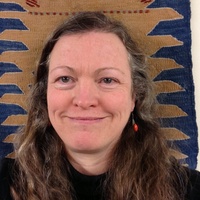
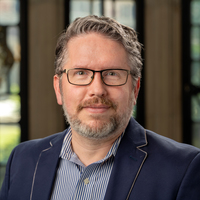

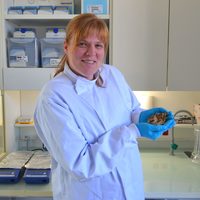

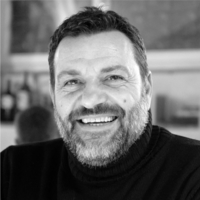


Uploads
Conference Presentations by Elli Karkazi
Talks-Presentations by Elli Karkazi
Instead of designing an exhibition around objects and assigning all other media a supporting, interpretative, or explanatory role, we treated material objects as elements of a non-hierarchical narrative toolkit; although the exhibition’s narrative included a small collection of heirlooms, they had the same narrative significance as that of sound, video, still image, text, and spatial installations.
Even though the first thing that visitors see is an authentic diary kept by a refugee from Asia Minor, the exhibition's plot plays with the materiality and affective power of this iconic object. Similarly, all other objects, carrying rich and diverse biographies, are introduced into a kaleidoscopic scenography, where, with the use of light and sound, they oscillate between being isolated museum entities and ambiguous personal reified memories.
Monitoring visitors’ behaviour we tried to understand whether we succeeded in both exploiting material objects' power and fighting their fetishist domination.
The exhibition was designed and implemented by the Laboratory of Museology of the University of the Aegean, being part of a wider project co-financed by Greece and the EU programme, Digital Transformation of the North Aegean in Culture and Tourism" [e- Aegean CulTour].
Papers by Elli Karkazi
Exhibitions by Elli Karkazi
Instead of designing an exhibition around objects and assigning all other media a supporting, interpretative, or explanatory role, we treated material objects as elements of a non-hierarchical narrative toolkit; although the exhibition’s narrative included a small collection of heirlooms, they had the same narrative significance as that of sound, video, still image, text, and spatial installations.
Even though the first thing that visitors see is an authentic diary kept by a refugee from Asia Minor, the exhibition's plot plays with the materiality and affective power of this iconic object. Similarly, all other objects, carrying rich and diverse biographies, are introduced into a kaleidoscopic scenography, where, with the use of light and sound, they oscillate between being isolated museum entities and ambiguous personal reified memories.
Monitoring visitors’ behaviour we tried to understand whether we succeeded in both exploiting material objects' power and fighting their fetishist domination.
The exhibition was designed and implemented by the Laboratory of Museology of the University of the Aegean, being part of a wider project co-financed by Greece and the EU programme, Digital Transformation of the North Aegean in Culture and Tourism" [e- Aegean CulTour].